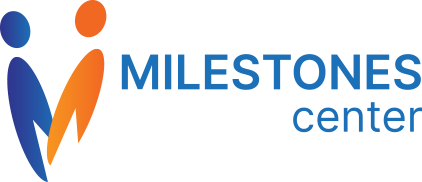My child does not show clarity in speech!
My child does not speak in sentences, even though he has a good vocabulary!
My child is a picky eater; he only eats the same food every day!
These are some common concerns we hear from parents during the Speech, Language and Feeding consultations. Parents are often left in a confused state as to why the child is not able to follow such seemingly simpler acts even after attending traditional Speech Therapy sessions for months. It is true that some children require additional support to perform speech and feeding activities. This is because both speech and feeding involves a series of complex activities. The movements that appear fluid for one may require much strength, stability and endurance for another individual.
Speech production involves the coordinated and sequenced movement of various components: respiratory, phonatory, resonatory and articulation. Similarly, the factors involved in developing typical feeding habits requires a normal sensitivity in the oral cavity, flexible jaw, lip, and tongue movements. Children who face difficulties in the areas may not often find significant advancements in their conditions from a traditional speech and language therapy alone. That makes it very important to find the right approach, at the right time, the earliest the better.
Oral Placement Therapy
Oral Placement Therapy (OPT) is a speech therapy approach that attempts to give children that extra support to perform the necessary oral act. Unlike the traditional Speech Therapy that focusses on ‘look at me, say what I say’, it utilizes a combination of auditory, visual and tactile stimulation in the mouth.
Oral placement therapy effectively utilizes the benefits of tactile and proprioceptive inputs to improve muscle sensitivity, awareness, and movements, all which are necessary for improving speech intelligibility, sentence length and feeding habits.

How do they help?
Unlike the traditional Speech Therapy, OPT comprises of a series of tools with hierarchy. Each tool has a pre-set criteria that enables them to move up the hierarchy only once they have met the criteria to pass successfully. The use of these tools and other movement-based prompts, will deliver the child an extra sensory information that eventually leads to formulation of intelligible and lengthier sentences and accepting and enjoying variety of food items.
Is there a criterion for selecting the population for OPT?
OPT can be performed on individuals across all ages. As it primarily focusses on difficulty with muscle awareness, grading, dissociation, and sensitivity, individuals facing these concerns are the suitable candidates for this therapy approach. Some common examples include individuals with apraxia, dysarthria, feeding concerns, reduced speech clarity, expressive language delay etc.
Reference:
- Overland, Lori. (2011). A Sensory-Motor Approach to Feeding. Perspectives on Swallowing and Swallowing Disorders (Dysphagia). 20. 60. 10.1044/sasd20.3.60.
- Sara Rosenfeld-Johnson (2001). Oral Placement Therapy for Speech Clarity and Feeding. Fourth Edition
- https://talktools.com/pages/opt-oral-placement-therapy?srsltid=AfmBOor67JYeNEwysP61CxeCbdRLJkigbYKIdeaDGLxM0gOd-U06bbQ7

